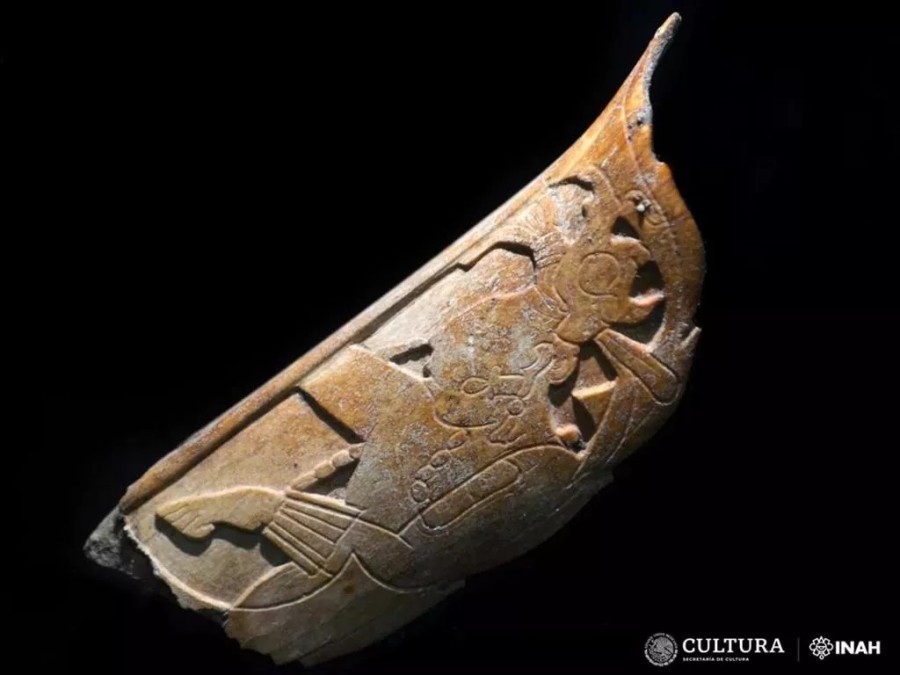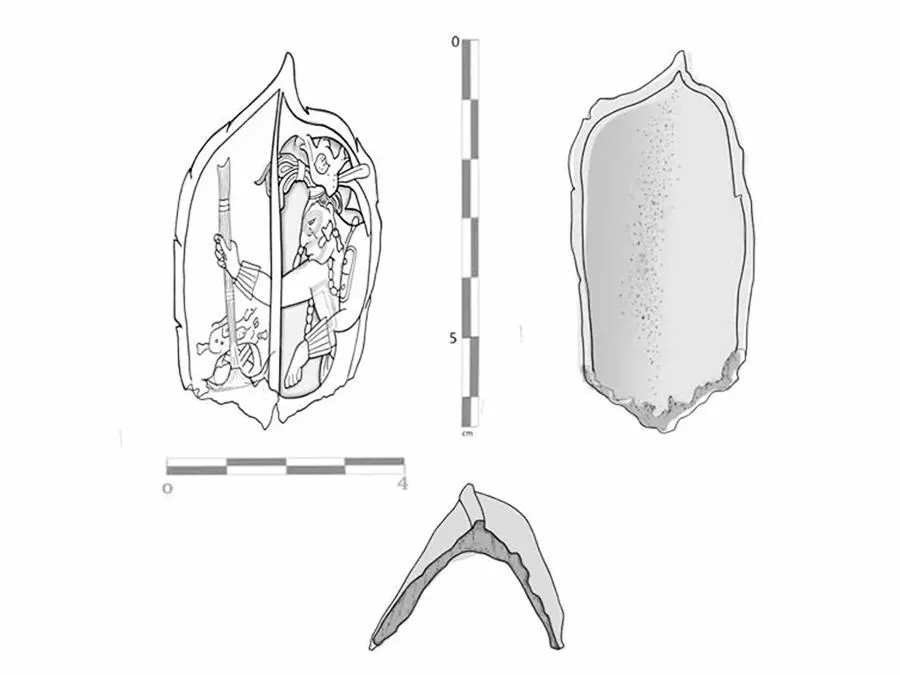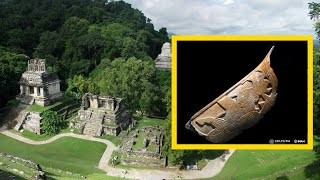Maya nose ornament made of human bone unearthed at Palenque Ruins
Archaeologists have discovered an intricately carved nose ornament crafted from human bone, during their excavations at the Maya city of Palenque in Mexico.

Credit: Carlos Varela Scherrer / INAH
The archaeological site of Palenque, also known as Lakamha in the Itza language, is situated near the Usumacinta River in the Mexican state of Chiapas. The recent excavation took place at House C, a part of a palace complex constructed by the revered Mayan ruler Pakal the Great.
The nose ornament, measuring just over 6 centimeters long and 5 centimeters wide, is believed to be over 1,100 years old. It is made from a fragment of the human distal tibia, a bone that contributes to the ankle joint.
The artifact features intricate engravings that symbolize ceremonial communication with gods and ancestors, providing valuable insights into the spiritual beliefs and rituals of the Maya civilization.

Credit: INAH
At the heart of the ornament is a carved image of a Mayan man, depicted in profile and adorned with a headdress and a beaded necklace. His arm bears the Mayan glyph for “darkness” or “night.” He is accompanied by a skull and holds a bundle, a common motif in Maya funerary scenes.
This fascinating depiction suggests that the ornament was worn during ceremonies where individuals embodied K’awiil, the Mayan god associated with lightning, serpents, fertility, and maize.
One of the striking features of this discovery is the ornamental nose ring’s positioning. When worn, it would have rested on the bridge of the nose, creating a continuous line from the forehead to the tip of the nose.
This unique placement likely aimed to mimic the elongated head of K’awiil, who was often depicted as a personification of an ear of corn, a significant symbol in Maya culture.
The excavation of this extraordinary artifact occurred within a ritual deposit, providing evidence of its use in ceremonies and as a symbol of the city’s elite. This deposit dates back to the Late Classic period, between CE 600 and 850, signifying its connection to a particular phase in Palenque’s history.

Credit: INAH
The discovery of the nose ornament was not an isolated find. The deposit also contained seeds, animal remains, obsidian blades, fragments of a bone awl, and even pieces of charcoal. The earth matrix in which the deposit was located was notably dark and rich in charcoal, underscoring the significance of this ritual offering.
Arnoldo González Cruz, the director of the Palenque Archaeological Project (PAP), emphasized the ornament’s remarkable aesthetic quality, featuring precise carving lines within a relatively small space. The composition of the ornament highlights the skilled craftsmanship of the Maya artisans.
Such adornments, often crafted from precious materials like jade, bone, and metals, were typically reserved for the elite, symbolizing their religious roles, political power, or social stature. These ornaments played a pivotal role in Maya rituals and ceremonies, symbolizing the wearer’s profound connection to the divine and the cosmos.
Related Post
A shocking documentary proves that mermaids do exist
SHOCKING Revelation: Thuya, Mother of Queen Tiye, Was the Grandmother of Akhenaten and Tutankhamun—What Ancient Egyptian Secrets Did She Leave Behind?
Breaking News: Astonishing Discoveries at Karahan Tepe Confirm an Extraterrestrial Civilization is Hiding on Earth, and NO ONE Knows!
Breaking News: Researchers FINALLY Discover U.S. Navy Flight 19 After 75 Years Lost in the Bermuda Triangle!
NASA’s Secret Investigation: Uncovering the Astonishing Mystery of the UFO Crash on the Mountain!
Explosive UFO Docs LEAKED: Startling Proof That Aliens Ruled Ancient Egypt!